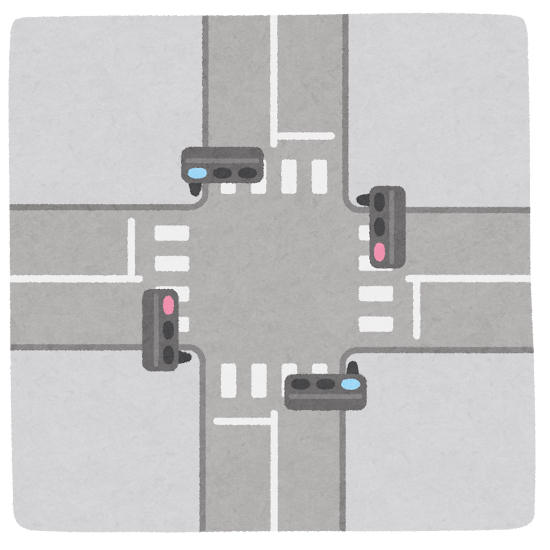こんにちは! Did you know that Japanese has some fun expressions that use parts of the face and body to talk about distance? This unique way of describing proximity adds charm to everyday language. In this issue, let’s explore these expressions and see how they bring conversations to life!
目の前(meno-mae)
目の前 breaks down as 目 (め, me) meaning "eye," の (no) meaning "of," and 前 (まえ, mae) meaning "in front." This phrase describes something directly in front of you or immediately visible, whether physically or figuratively.
Example Sentence
A: 見(み)て、虹(にじ)が目の前(めのまえ)に見えるよ!
Look, there’s a rainbow right in front of us!B: 本当(ほんとう)だ!まじ近(ちか)いじゃん!
Wow, you’re right! It’s so close!
手前(te-mae)
手前 combines 手 (て, te), meaning “hand,” and 前 (まえ, mae), meaning “in front.” It refers to something just before or right in front of another point or object, often used to give directions or describe positioning.
Example Sentence
A: あの信号(しんごう)の手前(てまえ)で右(みぎ)に曲(ま)がってね。
Please turn right just before that traffic light.B: わかった、あの信号の手前ね!
Got it, just before the traffic light!Example Sentence
The difference between 手前 (てまえ, te-mae) and 目の前 (めのまえ, me no mae)
手前(てまえ) indicates something slightly before a location, often used for directions.
Example:
コンビニの手前(てまえ)に小さな公園(こうえん)があるよ。
There’s a small park just before the convenience store.
目の前(めのまえ) describes something immediately visible and right in front of you.
Example:
コンビニの目の前(めのまえ)に小さな公園(こうえん)があるよ。
There’s a small park right in front of the convenience store.
目と鼻の先(me to hana no saki)
The phrase describes when one point is very close to another almost as close as the distance from your eyes to your nose. It’s used to say that something is “right nearby” or “just a short distance away.”
A: え、ここに住(す)んでるの?うちから目(め)と鼻(はな)の先(さき)じゃん!
Wait, you’re living here? That’s just a stone’s throw from my place!B: そうなんだ!これからもっと会(あ)うかもね。
Really? We might bump into each other more often then.
足元(ashi-moto)
足元 combines 足 (あし, ashi), meaning "foot," and 元 (もと, moto), meaning "origin" or "base." It’s used to describe something at or near one’s feet, like the area directly around you. 足元 can describe one’s immediate surroundings or something happening directly below, both in a literal and figurative sense.
Example Sentence
A: 気(き)をつけて!足元(あしもと)に段差(だんさ)があるよ。
Watch out! There’s a step at your feet.B: ありがとう、見(み)えてなかったわ!
Thanks, I didn’t see it!
今週も読んでくれてありがとう!また来週✌️!
Thanks for reading this newsletter! See you next week ✌️!
Previous Post 🗒️
しょうがないIt is what it is
Thanks for reading FusenClub! Subscribe for free to receive new posts and support my work.
Thanks for reading FusenClub! Subscribe for free to receive new posts and support us🫶











